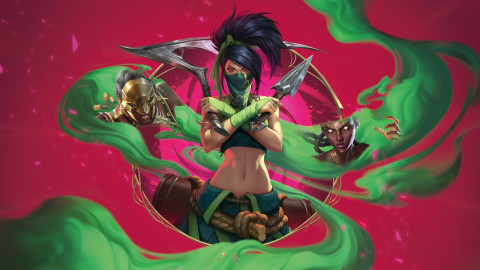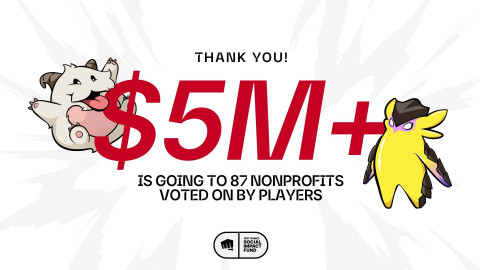
Diablo 2 is one of the most iconic games ever made. The game introduced many of the staples of the action role-playing genre that we may take for granted today, such as skill trees, end-game farming, and much more.
Due to its influence and widespread acclaim, Diablo 2 is beloved by many people. It’s so popular in fact, that 20 years later, a significant number of players are still actively playing the original title online, and its latest update was in 2018, only a couple of years ago.
Now Diablo 2 Resurrected, a remake of the game developed by Vicarious Visions, released this week.
This remake has a lot of people excited, but also apprehensive given Blizzard’s less than stellar track record on remasters. Sure, the BroodWar remaster brought new life to one of Blizzard’s most popular titles, but the Warcraft 3: Reforged is used as an example in college game design courses of what not to do when remastering a title.
Nonetheless, there is a lot of hype surrounding this remake, especially after a successful alpha and beta test revealed that the developers have taken great care to pay homage to the original game. While it may not be perfect, it will almost certainly be less disappointing than Warcraft 3: Reforged.
Inven Global had the chance to speak with Diablo 2 Resurrected developers Rob Gallerani and Michael Bukowski alongside other press outlets in the lead up to the launch of the new game. Rob Gallerani is the Studio Design Director on Diablo 2 Resurrected and Michael Bukowski is the Project Lead on the game.
The developers discussed how special it was to work on the remake of one of the greatest games of all time, how difficult it was to stay true to the original game while also updating it for the modern world, and the importance of upholding what they called “the sanctity” of the original experience.
Developers share their design philosophy for resurrecting Diablo 2
“No pressure right? It’s just some people’s most beloved, absolute most favorite game ever,” said Rob Gallerani in response to an opening question from Inven Global about the pressure of working on such an iconic game. “I think it’s humbling, because you get to work on something that is really important to people, including ourselves! This was one of the first PC games I really dug into.”
Gallerani explained that he relates to OG Diablo 2 fans, because he was one himself. Growing up he didn’t have much of a PC, but when he started college he finally had access to a computer powerful enough to run the stack of PC games he wanted to play. Among them was Diablo 2, and according to Gallerani, he didn’t get to any of the other ones after trying out Diablo 2 and becoming hooked.
So for him, the accuracy of the D2R experience was personal and professional challenge. But 100% accuracy will never be the case in a game like this, where updates are taking place and the game is being ported to whole new console systems and modern PC rigs. So the developers had to make a lot of decisions about what they would change, what they would keep, and where to draw those lines.
“There are people who have not stopped playing this game in two decades,” Gallerani stated. “I think going into it knowing there are people who know this game better inside and out than we do and getting to geek out by looking behind the curtain and seeing how the code works, it was a really important project to kind of be honored to work on.”
“For me, I want to work on games that matter, what better way to do that than to have something that is iconic in the PC space, to be able to bring that back,” chimed in Michael Bukowski. “For me, it’s been a privilege to be a part of the project.”
In the interview, both developers described their mission as “preserving this game” even describing the accuracy of the remake as sacred at one point.
“There are two groups of people we have to be mindful of, [old-school fans and new players],” Gallerani explained. “We are preserving this game. We are bringing the game people remember into this era. What we are NOT doing is iterating on the franchise. . . that was our paramount goal with this.”
He continued, “But we also have to be aware that this game came out when many players were not even alive, and the world has changed significantly. The way you would play before, when you would make sure someone wasn’t on your phone line before you connected, that world doesn’t really exist anymore. . . so we have to keep the core of the game the same, but we want to get more people on board with what the game is.”
As part of these commitments, the development team decided not to add any tutorial or handholding to the game, instead, maintaining its original "die over and over and figure it out" mindset. However, they are bringing some more updated options like inviting people from friends lists, improved verbiage around menus, and auto-gold pick-up options that have become normal means in the gaming industry. They also added some updated accessibility options like more languages and improved settings.
“[Our changes] won’t change what the game is, just how easy it is to play it,” Gallerani said. “And anywhere where we would add something where we were like ‘okay, we don’t know’ we would try to allow people to turn it off, or to opt-out of that change. Like auto-gold pickup, almost everyone we have given it to, even die-hard players, are like ‘you know, auto gold just makes it better’ but you can turn it off.”
The developers are even bringing back the bugs (but not all of them)
The developers’ commitment to keeping classic features of the game even extended to many of the bugs in the original titles, though they explained that how they handled each bug became an individual basis challenge. Some of the classic bugs like recovering your corpse by logging out and back in, for example, will remain since that became a genuine part of the original experience of Diablo 2. Other, more game-breaking bugs, were removed though.
“Over 20 years, people talk an awful lot about this game [online],” Gallerani explained. “Usually we resolved more of our problems with ‘what preserves the experience the players remember the most’ which gave us a lot of it. But there were other bugs we had to fix because they created exploits or opportunities for item duplicating, that is where we had to fix the issue.”
There were also bugs that they didn’t change at all, but because of modern systems, they will appear to be changed for the player.
The devs used the example of the “next hit always misses bug” to demonstrate the gray area that bug fixes existed in during the development of this game.
In the original game, there was a “bug” that would sometimes cause players to miss followup-hits occasionally. According to the devs, the reason this was happening was related to a desync between the player client and the server. What players perceived on their end as a bug missing the next attack, was actually the server trying to play its “take a hit animation” which interrupted their attack on the server-side, but not the client-side.
So the developers have “fixed this bug” but really all they did was fix the desync issue.
They explained, “We didn’t really change anything, we just made it more honest. Most of the time we went with what was really occurring behind the scenes, which is perceived as a change. . . so we had to handle bugs on a special case for almost everything.”
Another notable bug change in the new game is the fixing of the cow king bug. In the original game, if someone in your part had killed the cow king you couldn’t summon them again on that difficulty with that character. According to the developers, fixing this bug was a big quality of life improvement that didn’t change the balance of the game at all. There were also other small QOL of changes, like minor color changes to the minimap for example.
All of this to say, the idea of keeping bugs versus fixing them is actually much more complicated than many players might first imagine. Many of the iconic “bugs” will remain in the game, but there are also some bugs that have been fixed and some quality of life improvements that players will notice in the game.
The visual challenges of Diablo 2 Resurrected: Bringing Diablo 2 into 2021
The greatest challenge in creating a faithful remake of Diablo 2 is in translating the 2d game into a 3d graphical space without changing the gameplay. Articles have been written and interviews given, in which experts and old-school players alike have questioned whether this ARPG could be recreated for modern systems with any level of accuracy.
The mastermind behind the Diablo games David Brevik even publicly expressed his doubts of making a faithful remake in an interview in 2017, in which he suggested that making the game feel the same would be nigh on impossible, saying, “If they do a Diablo 2 Remaster, it’s going to be difficult to make it feel exactly like the same game. They could do it but they will have to go out of their way to ensure that they are simulating the way that the game works in 2D instead of making it 3D if that makes sense".
That is is exactly what the developers ended up doing. They built a 3D sprite engine on top of the original engine, keeping the backend the same while updating the visuals. And it looks pretty damn good, at least to me.
“From a visual standpoint, we knew right away that the only way to be true to this game was to build off the original game,” Bukowski explained. “One of the early decisions was, do we architect it in such a way that we take the original sprites and up-res them? Or do we try to be true to what [the original developers] were trying to make? What did the team actually want to be able to do but the technology wouldn’t let them?”
He continued, “While it was the harder path building a completely new graphics engine, it was the way to go. That created a lot of decisions that had to be made from an art style perspective. . . The art team used this 70/30 concept, where we would stay 70 percent true to the original and have 30 percent leeway.”
According to the devs, the art team also relied heavily on original concept art, always trying to find the balance between the original aesthetic and the spirit of that aesthetic. There were also a lot of gameplay considerations in the creation of the new graphics.
“From a gameplay standpoint, there was a lot of iteration so that things feel right,” Bukowski said. “There was one point in time where we went event further from a lighting standpoint. The graphics team wanted to look at how to do a really sophisticated global illumination system, but it became clear that if we enable that light was going to bounce in too many places, and we would end up with a game where visibility was different from the original. That was something we could not have, because we needed to make sure that. . . you are playing that [original] experience.”
Gallerani added to that, explaining, “we never wanted you to have more or less information by toggling the graphics. And so, lighting was a huge deal. The game is dark, right? But when you take something that is a real dark, gritty kind of environment and you try to bring that to a visual bar that is so lifelike but also at the same time a game... I am a bloody barbarian fighting dark corpses on a rainstruck muddy field and a gem drops. I am not gonna find that gem at all!”
He continued, “So when we first did stuff, my wooden club falls in the mud in the forest and I can’t see it, well yeah! It’s a wood club, in the mud. So we added extra tech with more light passes, because as a gamer I can still see that sorta thing. The same is true with other stuff, like this new creature, when it was made as a sprite, they were built in a way that played up to their strengths as a sprite. It may not have been done as realistically. . . Now we go in and put details in, but it has the same silhouette as that original sprite. You can actually add too much realism.”
He concluded, “That as the line for us, it was like, nope, you are getting more or less game information than you were before. That is how we knew when we had gone too far with details or fidelity.”
Translating Diablo 2 Resurrected to Console
Another big challenge in this development project was the translation of this early PC game to console and controller players for the first time. The developers had to make certain changes to menu structure and UI navigation to make this game feel intuitive as a controller experience. The translation is made even more complicated by cross-progression since players will be switching between PC and console at will, which means they can’t just build two completely separate systems.
“With cross-progression, I am playing on my Switch on the bus, come home, fire it up, and it’s the same game,” Gallerani said. “How would my PC know where my items are in the grid if we had them as a list on the console? You couldn’t even make that change. . . It just didn’t feel the same way.”
As a result, they have created a hybrid control set for consoles and controller players. The controller version has a mappable action bar with six buttons, and you can cycle between different sets of hotkeys. There is also some sensitivity to your movement speed based on how hard you push your analog stick, and speaking from beta experience, it's actually pretty decent. If you are on PC, you can seamlessly switch between the two input methods.
“The introduction of the controller and console creates a different [challenge],” Bukowski said. “There are a lot of communities we are catering toward with this game, and one of them is nostalgic players who did play the game 20+ years ago, who might not be PC players today and are now console players. So that is where we are trying to listen and understand continually, even as we go through launch, to understand if we are doing the right things for all the different communities out there.”
The developers explained that they built every version of the game around each individual platform, not just the controls. And While Xbox and Playstation was a relatively standard port, Switch presented a particularly interesting challenge, as it is a portable device that is so unlike the other systems that will be running only on larger monitors.
“The ability to pick your game up and play on-the-go, is not consistent with the other systems,” Gallerani said. “We had to focus on the size of font, for example, something that is readable on a giant screen TV is not the same when you scale it down, especially when you come out in 16 different languages. So we put a lot of time and energy into what it looked like in docked versus undocked mode, things like that.”
They also explained that four players also read better than eight players on the Switch's small screen, leading to the scaling back of the player count primarily to make a better experience for players, not because of performance limitations.
One thing that surprised the developers was that the menu system for D2R console was so good, that numerous keyboard and mouse players sent feedback during the beta requesting the hotkey action bar from the controller be brought back to keyboard and mouse.
“We really kind of focused on. . . [keeping keyboard mouse] as true to the original as you can get it,” Gallerani explained. “You are a controller player? You are okay with a bunch of different things. But to see the diehard Keyboard and mouse want to pull stuff from the controller, was a surprise for us. In the end, we didn’t look at that for launch, because it was just too different, too much of a change.”
What will support for Diablo 2 Resurrected look like?
Given Blizzard's questionable track record on supporting games like Warcraft lll: Reforged, there are concerns from the Diablo 2 Resurrected community that support will end with launch. But according to the developers in the launch interview, they are committed to getting this game right and supporting it after launch.
They said that they intend to continue to build on what they called “the bedrock” of the initial release, eventually releasing ladder play and then more down the line. They also committed themselves to taking feedback from the community and actively working toward improving the game based on that feedback.
“I think it’s a moving target, and once the game goes live it will be more of a moving target,” Gallerani said in response to a question about when the game can be considered done. “We have to go with the temperature of the community, and they will tell us when it’s done. But what is really hard to navigate is that we have a large community, and they don’t always agree.”
With a game that has been active for 20-years, different groups in the community have a different view of nostalgia, across the various patches and updates over the years. Balancing these needs can be difficult since there is no definitive nostalgia. But Vicarious Visions sounded ready and willing to tackle this challenge.
They concluded, “we are going to see the big ones where we misstepped. . . Then at a certain point, those itchy spots for the community will diminish, and you will see more people saying ‘oh we want this change, or this quality of life adjustment’ and that is when we will start to shift our focus.”
Regardless of the specific timeline for changes, the developers have at least publicly committed to supporting this title after launch and getting this right. We will have to wait and see what that looks like.
Diablo 2: Resurrected releases on Thursday, September 23rd for PC and console.
-

Aaron is an esports reporter with a background in media, technology, and communication education.
Sort by:
Comments :0





